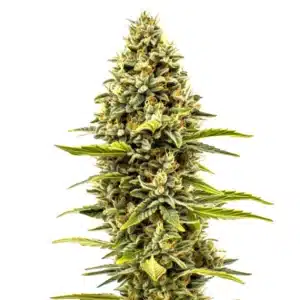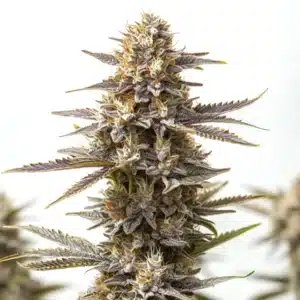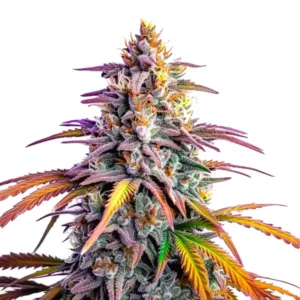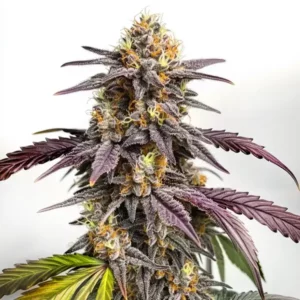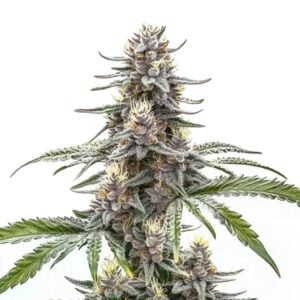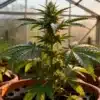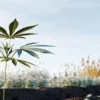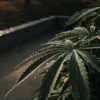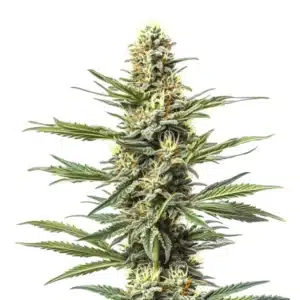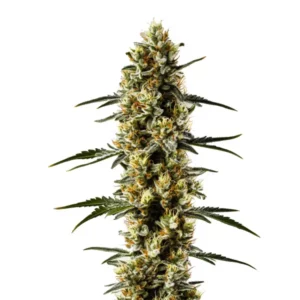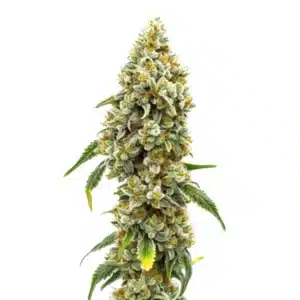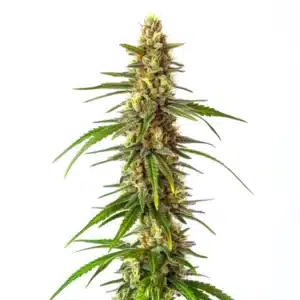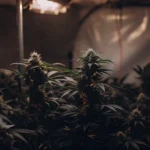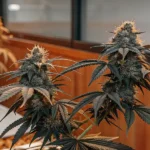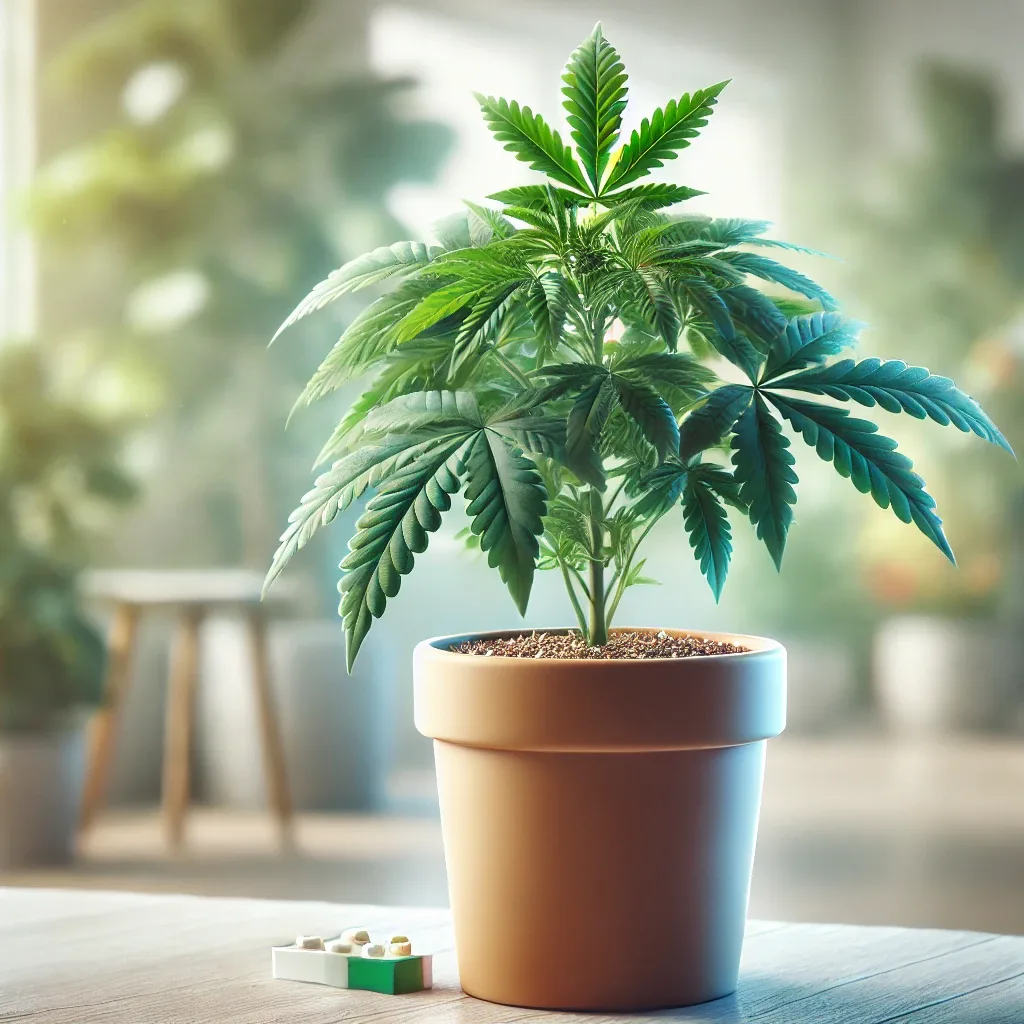
CBD Clones: Benefits and Growing Tips
What Are CBD Clones?
Key Characteristics of CBD Clones
CBD clones are cuttings taken from mother plants with high CBD content, ensuring that each new plant carries the same cannabinoid profile. These clones are ideal for growers focused on cultivating plants for medicinal or therapeutic purposes, as they offer consistent levels of CBD. By using clones, cultivators can avoid the unpredictability of seeds, especially in terms of potency and cannabinoid ratios.
The consistent genetic makeup of CBD clones makes them valuable for those seeking predictable effects. For patients and consumers alike, reliability is key, and using it allows growers to produce crops that meet specific needs with consistency. With stable genetics, it allow growers to provide high-quality products that maintain a uniform therapeutic effect.
Recommended Strains
Cheese
|
|
THC | 14% - 18% (Medium) |
|
|
Type | Feminized |
|
|
Yield | Medium |
|
|
Phenotype | 60% Indica / 40% Sativa |
Cheese Auto
|
|
THC | 10% - 15% (Low) |
|
|
Type | Autoflowering |
|
|
Yield | Medium |
|
|
Phenotype | 75% Indica / 25% Sativa |
Advantages of Using Clones for CBD Production
Growing CBD clones bypasses the germination stage, saving time and accelerating the production cycle. This quick start makes clones particularly appealing for both commercial cultivators and home growers who want faster results. Since this clones begin with established roots, they have a head start in development and can reach maturity sooner than plants grown from seeds.
In addition to saving time, it bring genetic stability to a grow, crucial for producing crops with consistent cannabinoid content. When every plant has identical genetics, growers can predict the effects and CBD levels with accuracy, an essential advantage for medical cannabis producers who must meet specific standards for therapeutic efficacy.
Promos & Deals
Benefits of Growing CBD Clones
Consistent CBD Levels and Effects
One of the main benefits of CBD clones is the guarantee of consistent cannabinoid levels across each plant. This uniformity allows cultivators to produce a reliable product, essential for patients seeking dependable effects. Using clones ensures that CBD content remains stable, eliminating the variations often seen in plants grown from seeds, even within the same strain.
For medical and wellness products, consistency is essential, and this clones deliver on this front. Whether grown for personal use or commercial production, plants cloned from a CBD-rich mother plant retain the original’s potency. This dependability can make a big difference for consumers who rely on specific CBD levels for relief from anxiety, inflammation, or other conditions.
Faster Growth Cycle for Enthusiasts
CBD clones provide a jump-start to the cultivation process, reducing the time from planting to harvest. For growers who need quick, reliable yields, clones are ideal because they skip the seedling stage and go directly into vegetative growth. This efficiency is particularly useful for commercial operations focused on rapid turnover and optimized grow cycles.
Besides speeding up production, it require less attention in their initial stages compared to seedlings. With an established root system, clones are more resilient, making them easier to care for as they grow. This resilience, paired with a faster growth cycle, offers significant advantages for both hobbyists and professional growers.
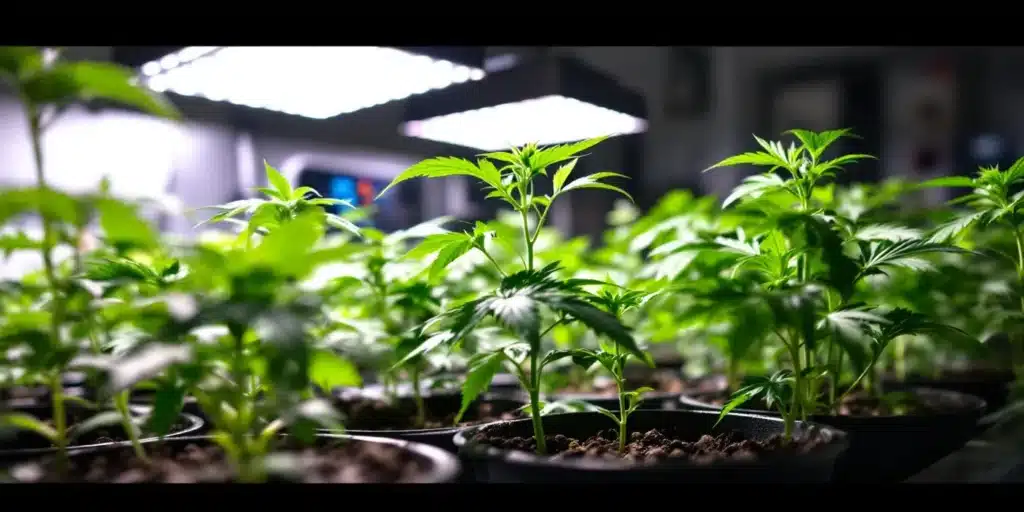
Growing CBD Clones: Tips for Success
Setting Up the Right Environment
To maximize the success of CBD clones, a controlled environment is essential. Choose a well-ventilated space where temperature and humidity can be regulated. Fluctuations in climate can hinder growth, so maintaining a stable environment will prevent stress on the plants. Proper airflow, lighting, and clean surroundings are all critical for healthy clone development.
The right grow environment for CBD clones also involves indirect, steady light, especially during the initial stages. LED grow lights are excellent for providing energy without overheating the young plants. By setting up an optimal space, growers give clones the best start possible, leading to stronger plants with higher CBD yield potential.
Nutritional Needs and Soil Selection
It need specific nutrients to thrive. Start with a balanced blend of nitrogen, potassium, and phosphorus, which provides essential elements for robust growth. Adjust nutrient levels as the plant progresses from early growth to later stages. Adequate nutrition will lead to healthy foliage, strong roots, and high cannabinoid production.
As for soil, choose a medium that retains moisture but allows excess water to drain easily. High-quality soil mixes with perlite or coco coir work well for CBD clones, promoting root health. By selecting the right soil and nutrition, growers create a strong foundation that ensures the success and potency of each CBD clone.
Comparing CBD Clones and Seeds
Key Differences Between Clones and Seeds
It offer a uniform start, while seeds can bring genetic diversity and variability. Seeds require germination and can develop into plants with slight differences in CBD levels or effects. On the other hand, clones are genetically identical to the mother plant, making them a better choice for those who value consistency in cannabinoid content and growth characteristics.
For growers focused on CBD production, clones provide a reliable option with predictable results. Seeds are better suited for those interested in exploring genetic variety and hybridization. However, CBD clones simplify the growing process, offering a stable foundation for high-quality cannabis cultivation focused on therapeutic properties.
Choosing Based on Cultivation Goals
When selecting between seeds and CBD clones, your cultivation goals play a major role. For quick and consistent harvests, clones are ideal as they reduce the overall time to production. Clones guarantee a stable cannabinoid profile, making them highly valuable for medical growers and anyone focused on producing a standardized product.
Seeds, however, allow for more exploration and the potential discovery of unique phenotypes. For hobbyists and those breeding new strains, seeds provide a chance to experiment. But if uniformity and faster yield cycles are priorities, it remain the best choice for cultivating high-quality CBD-dominant cannabis.
Best Practices for Cloning CBD-Rich Strains
Selecting Mother Plants for CBD Clones
For successful CBD cloning, selecting a strong mother plant with high CBD content is essential. The ideal mother plant should have a proven history of high cannabidiol levels and show signs of robust health, such as vibrant leaves, sturdy stems, and no signs of pest damage. Consistency in quality and potency across the clones depends significantly on the genetic stability of the mother plant.
Choosing the right mother plant can make a noticeable difference in the quality of the clones. A healthy, high-CBD mother plant ensures that each clone produced has the desired CBD potency, which is critical for growers aiming for consistent medicinal or wellness products. This step helps avoid unexpected variations in CBD levels, ensuring that users experience the benefits they seek from each harvest.
Maintaining the Health of Mother Plants
Properly caring for the mother plant is key to producing high-quality CBD clones. Ensure the mother plant receives the right balance of nutrients and stays free from stress factors like pests, extreme temperature changes, or nutrient deficiencies. Maintaining optimal conditions keeps the mother plant in a state of peak health, which directly influences the resilience and quality of the clones taken from it.
A well-maintained mother plant can continuously provide reliable clones, reducing the need to constantly find new sources. Regular pruning and careful management of the mother plant ensure it remains productive for longer periods, allowing for multiple rounds of cloning without sacrificing quality. For growers, investing time and resources into a strong mother plant pays off in higher-quality clones.

CBD Clone Yield Optimization Techniques
Adjusting Light and Nutrients for CBD Clones
It thrive best under specific light and nutrient conditions tailored to promote cannabinoid production. During the vegetative phase, using a balanced light spectrum, particularly blue light, encourages vigorous growth. As clones mature and enter flowering, increasing the red light spectrum can help enhance CBD content in the buds. Nutrient adjustments, such as adding phosphorus and potassium, further support clone growth during the flowering stage.
This adjustment in lighting and nutrients can enhance both yield and potency, ensuring the CBD clones reach their full potential. Providing the right nutrients at each growth stage, especially those promoting resin and bud development, results in healthier plants with high-quality CBD output. Growers can make informed choices based on how different nutrients and light affect cannabinoid levels, maximizing the value of each clone.
Managing pH and Watering for Optimal Growth
Consistently managing pH levels and watering practices is essential for healthy CBD clones. Ideal pH levels should be kept between 5.8 and 6.2 for clones grown hydroponically, while soil-grown clones thrive at slightly higher pH levels, around 6.0 to 6.5. Watering should be adjusted based on environmental conditions and clone growth stages, ensuring roots receive adequate moisture without causing stress from overwatering.
Frequent monitoring of pH and moisture levels keeps it in a balanced growth environment, reducing the likelihood of issues like nutrient lockout or root rot. Careful attention to watering and pH encourages stronger, healthier roots, supporting plants that are more resilient and capable of high CBD production.
Expected CBD Levels from Clones
It retain the exact cannabinoid profile of their mother plant, resulting in stable CBD levels across every harvest. This is a key advantage for growers looking for consistency, as each clone delivers predictable therapeutic effects. For patients and consumers, this uniformity translates to a reliable product.
By using clones, growers can meet specific CBD potency standards, ensuring each plant maintains the desired cannabinoid level. This predictability is highly sought after in the medical cannabis industry, as it guarantees users receive the expected benefits from each batch.
CBD Clones vs. THC Clones: What to Know
The main difference between CBD clones and THC clones lies in their cannabinoid profiles. While CBD clones are bred for high cannabidiol (CBD) content, THC clones focus on high levels of tetrahydrocannabinol (THC). It offer calming, therapeutic effects without the psychoactive “high” associated with THC, making them ideal for medical use and wellness products. For growers focused on therapeutic cannabis, It are an optimal choice, delivering a relaxing, non-psychoactive experience.
For instance, Gruntz clones and Blue Runtz are well-known THC clones that provide robust psychoactive effects. Gruntz is cherished by recreational users for its potent, euphoric high and vibrant flavor profile, while Blue Runtz offers a balanced yet strong THC effect with fruity undertones, ideal for those looking to relax and enjoy a rich sensory experience. These THC-focused clones are excellent options for those cultivating for recreational purposes or for specific medical needs requiring THC.
In contrast, CBD clones focus on delivering therapeutic effects without the psychoactive experience, making them suitable for a wide variety of users. Knowing your goals can help you decide between CBD and THC clones, both of which share similar cultivation practices yet serve different user experiences.
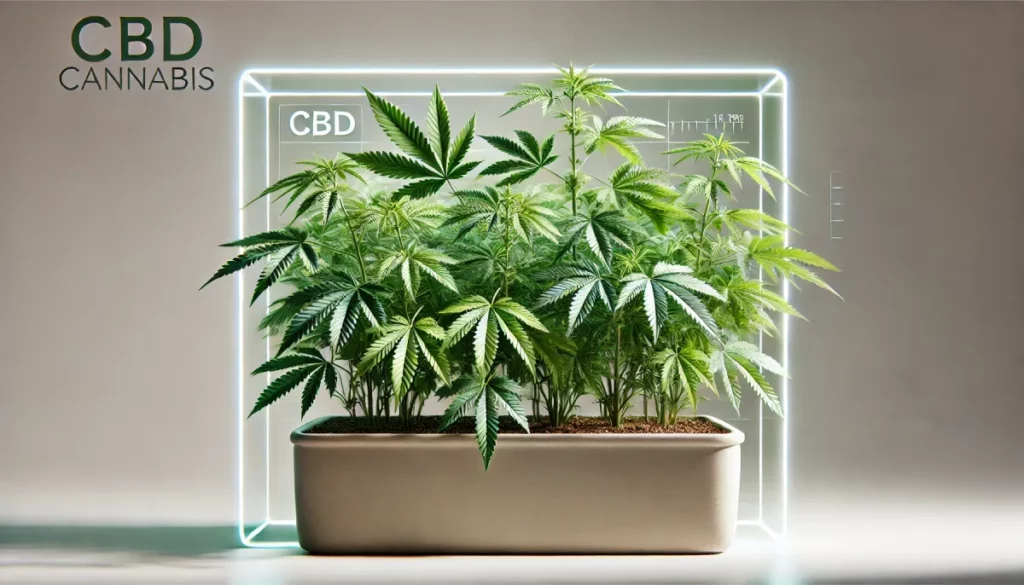
Selecting the Best CBD Clone Strains for Cultivation
Popular CBD-Rich Strains for Cloning
When it comes to choosing the best CBD clone strains, look for varieties known for their high cannabidiol content and robust growth patterns. Strains like ACDC, Charlotte’s Web, and Harlequin have made a name for themselves in the CBD market due to their impressive therapeutic properties and stable growth characteristics. ACDC is renowned for its soothing effects without sedation, making it ideal for daily relief, while Harlequin provides a balanced effect that combines mild relaxation with mental clarity.
Each strain has its unique profile of effects and growth needs. Charlotte’s Web, for instance, is celebrated for its high CBD content and was one of the first CBD strains to receive widespread acclaim. By selecting it from proven strains, growers can ensure a quality product that appeals to users seeking specific wellness benefits.
Growing Requirements for Popular CBD Clone Strains
CBD-rich strains may have distinct cultivation requirements that optimize their cannabinoid content. For example, Harlequin often benefits from slightly cooler environments to maintain its unique balance of cannabinoids. Meanwhile, Charlotte’s Web thrives in nutrient-rich soil with a consistent light schedule to encourage its full CBD potential. Knowing the specific needs of each strain can help growers set up their environment to support the highest-quality yield possible.
Growers should also be mindful of each strain’s light, nutrient, and temperature needs throughout different growth stages. By understanding the preferred conditions for each CBD strain, cultivators can ensure they’re maximizing yield and potency. Cloning these strains ensures every plant exhibits the desired characteristics, making it easier to provide users with reliable, high-quality CBD products.
Frequently Asked Questions About CBD Clones
What are the main benefits of using CBD clones over seeds?
It provide a faster and more reliable way to grow CBD-rich plants because they are exact genetic copies of a strong mother plant with desired characteristics. Clones guarantee a high-CBD profile, allowing for consistent potency and effects in each harvest. This consistency is especially valuable for growers focused on medicinal CBD products, as it helps ensure a stable quality across crops.
Can I expect the same CBD potency in clones as in the mother plant?
Yes, it should mirror the CBD potency of the mother plant because they inherit the same genetic makeup. However, growing conditions such as lighting, nutrients, and environmental management will impact the final CBD concentration. By maintaining optimal growing conditions, you can maximize the potential for each clone to reach the same potency as its source.
How long do CBD clones take to mature?
CBD clones typically reach maturity faster than plants grown from seeds. Depending on the strain, clones may take around 8-10 weeks to flower if provided with the right conditions. Using clones cuts down on the time needed for the seed germination and early growth stages, allowing you to enjoy a quicker yield cycle.
Are CBD clones more prone to disease than seed-grown plants?
Its are not inherently more susceptible to disease. However, they may carry over any issues present in the mother plant, so it’s important to choose a healthy, pest-free mother. Clones generally do well if kept in controlled environments where light, humidity, and nutrients are monitored to prevent conditions that might lead to diseases or pest infestations.
What’s the best environment for growing CBD clones?
CBD clones thrive in an environment with controlled temperature, humidity, and light exposure. Ideal temperatures range from 70-85°F with moderate humidity levels, especially during the rooting phase. Full-spectrum grow lights, tailored nutrient solutions, and regular monitoring will help create a favorable setting for high-yield, CBD-rich clones.
Can I grow CBD clones outdoors?
Yes, it can be grown outdoors, but be mindful of your region’s climate and legal restrictions. Outdoor growing may expose plants to pests, weather fluctuations, and variations in light quality, which can impact CBD levels. When growing outdoors, it’s often best to start clones indoors and then gradually acclimate them to outdoor conditions.
Do CBD clones require special nutrients?
Its benefit from a well-balanced nutrient solution that supports both root development and CBD production. During early growth stages, they need nutrients focused on nitrogen and root support, and as they transition to flowering, they benefit from additional phosphorus and potassium to aid resin and cannabinoid development.
How often should I water my CBD clones?
Watering frequency depends on the clone’s environment and growth medium. For soil-grown clones, water when the top inch of soil feels dry. Hydroponically grown clones require consistent access to water with regular nutrient adjustments. Always avoid overwatering, as it can lead to root rot and negatively impact plant health.
Can I create my own CBD clones at home?
Yes, with the right setup, you can take cuttings from a CBD-rich mother plant and create clones at home. Using a clean, sharp blade, rooting hormone, and a well-controlled environment, many growers find success with DIY cloning. Just ensure you have the necessary space and equipment for a thriving cloning process.



